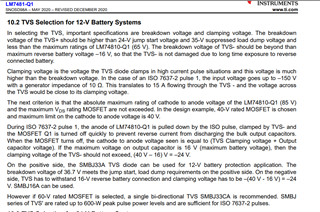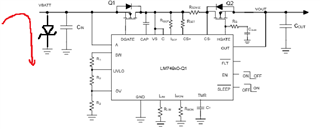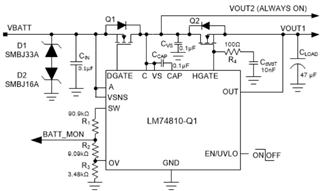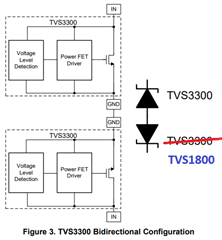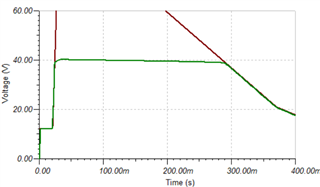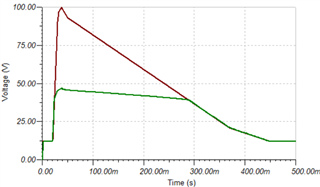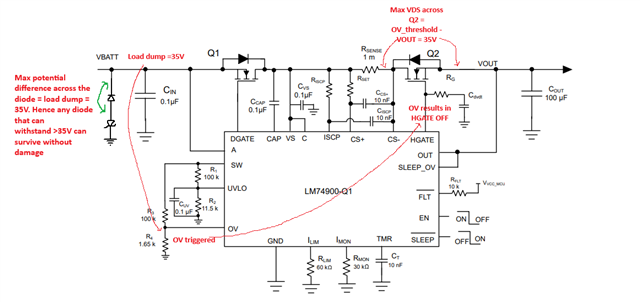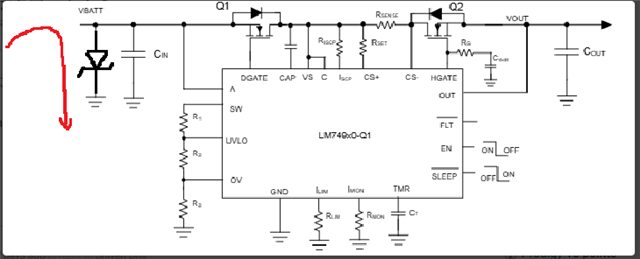Other Parts Discussed in Thread: TVS3300, TVS1800
Tool/software:
In the LM74910-Q1 datasheet, page 32, paragraph 10.2.4 MOSFET Selection: Blocking MOSFET Q1 the following statement confusis me:
"It is recommended to use MOSFETs with VDS voltage rating of 60 V along with a single bidirectional TVS or a VDS rating 40-V maximum rating along with two unidirectional TVS connected back-back at the input. "
We have a 12V dual battery system and want to use active ORing using two LM74910-Q1 devices.
Since we are looking for very high current (115A) with a single MOSFET solution with RDS(ON) < 0.5mOhm, 40V VDS seems to be a better choise and IAUCN04S7N004 seems to be a good option (VGS=20V).
We were thinking to use a single bidirectional TVS, e.g., TPSMC22CA-VR w. 1500W having max. clamping voltage of 35.5V @42.3A (Vc@125*C = Vc@25*C x (1+0.092/100 x (125*C-25*C))=38.76V) and reverse stand-off voltage of 22V @1uA max. in both directions.
Eventually, to provide more margin, we may choose TPSMC20CA-VR having max. clamping voltage of 32.4V @46.33A (Vc@125*C = Vc@25*C x (1+0.091/100 x (125*C-25*C))=35.35V) and reverse stand-off voltage of 20V @1uA max. in both directions.
Note: The SMBJ series proposed in your datasheet (10.4.2 TVS Selection for 12-V Battery Systems) has very large interval between reverse stand-off and max. clamp voltage. For example, SMBJ18CA with VRM=18V vs. Vc=39.3V@25*C / 42.9V@125*C.
However, your datasheet proposes to use two unidirectional TVS connected back-to-back for VDS=40V.
Why? Why is this better than a bidirectional TVS? What am I missing in my understanding of TVS diodes?
Your application note "How to select a Surge Diode" (www.ti.com/.../slvae37.pdf also confuses me when it comes to dynamic resistance to be counted in the clamping voltage.
The TVS datasheet does not provide any data for the dynamic resistance. I assume that the provided max. clamp voltage in the datasheet already counts the intrinsec RDYN.
Am I wrong in this assumption?
Regards,
Ferenc


